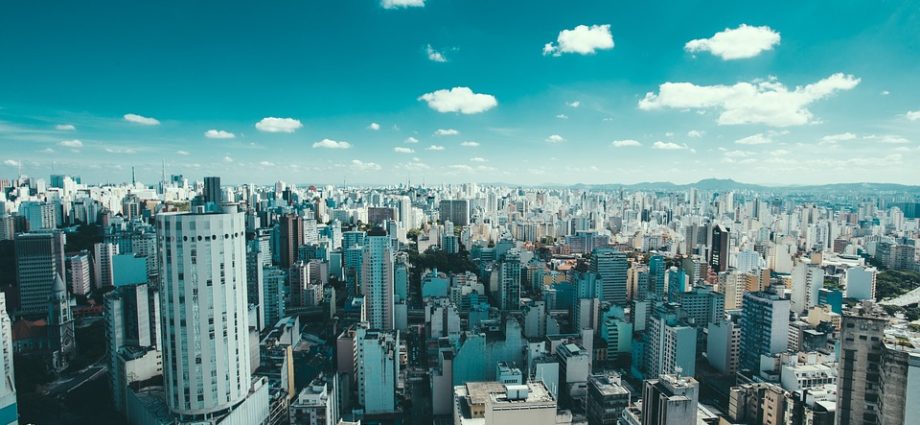Brazil: A Land of Vibrant Diversity and Natural Wonders
When most people think of Brazil, they likely picture the iconic Christ the Redeemer statue that highlights Rio de Janeiro’s skyline or perhaps envision stunning beaches and samba-filled streets. While spectacular beach towns and carnival festivals certainly make Brazil a popular tourism destination, the country offers much more than meets the eye. From pristine rainforests and thundering waterfalls to world-renowned museums and colorful cultural experiences, Brazil is a diverse and captivating travel destination.
Let’s dive into what makes Brazil a land of vibrant diversity and natural wonders.
Brazil’s Diversity
Brazil boasts a population of over 212 million, making it the fifth-largest country in the world. Brazil’s population is famously diverse, consisting of various ethnic and cultural backgrounds. Indigenous peoples make up 0.5% of Brazil’s population, and Afro-Brazilian descendants, who were brought to the country as slaves beginning in the 16th century, make up over 50% of the population.
Additionally, Brazil is home to one of the largest populations of Italian, German, Japanese, and Arab people outside their home countries. This mixture of cultures makes Brazil a unique nation with a wide range of customs, music, food, and traditions.
Brazil’s Natural Wonders
Brazil is renowned for its natural beauty, and according to the World Wildlife Fund sits in the top 10 of countries with the highest levels of biodiversity in the world. Brazil boasts an extensive coastline with over 7,400 kilometers of beaches perfect for surfing, sunbathing, and sipping caipirinhas. However, the country’s inland treasures are equally awe-inspiring.
The Amazon Rainforest, the world’s most massive tropical rainforest, covers over 60% of Brazil’s territory. It consists of a vast network of rivers, dense forests, and diverse wildlife home to species such as jaguars, toucans, and giant otters. Visiting the Amazon, whether by hiking or riverboat, provides an opportunity to explore one of the planet’s most remarkable eco-systems.
The massive Iguazu Falls, located on the border of Brazil and Argentina, is another natural wonder. Iguazu Falls consists of more than 275 waterfalls, spanning two and a half miles, and has been named as one of the new Seven Wonders of Nature. The falls offer visitors an impressive sight and an opportunity to experience the misty spray of the falls.
The Pantanal, a wetland area situated in Brazil’s Midwest, is another breathtaking region to visit. Often compared to the Amazon Rainforest, Pantanal is home to a large number of animal species, including jaguars, maned wolves, howler monkeys, and macaws. Here, visitors can explore the wetland area by boat, jeep, or even on horseback.
FAQs about Brazil
1. What language do they speak in Brazil?
Brazil’s official language is Portuguese, which is spoken by over 200 million people worldwide.
2. What is the currency in Brazil?
The Brazilian real is the country’s currency, and one US dollar is currently equal to approximately 5.25 real.
3. Do I need a visa to visit Brazil?
It depends on your country of origin. Citizens of certain nations, including the United States, Canada, and Australia, are eligible to enter Brazil for up to 90 days without a visa. However, citizens of other countries may require a visa, so it is best to check before planning a trip.
4. What is the best time of year to visit Brazil?
Brazil is a large country with varying climates depending on the region. Generally, the ideal time to visit is during the dry season, which runs from May to September. However, if you plan to visit the Amazon or Pantanal regions, the rainy season from December to February is the best time to see the area’s vibrant flora and fauna.
5. Is Brazil safe for tourists?
While Brazil is a generally safe country, like any travel destination, it’s essential to take appropriate precautions to ensure your safety. Visitors should avoid flashing expensive jewelry, carrying large sums of cash, or walking in unfamiliar areas alone at night.
Top 10 Tourist Attractions in Brazil
1. Christ the Redeemer – The 98-foot statue, perched on Corcovado Mountain overlooking Rio de Janeiro, is an iconic symbol of Brazil.
2. Copacabana Beach – One of the most famous beaches in the world, located in Rio de Janeiro, offers vendors, restaurants, and a lively atmosphere.
3. Iguazu Falls – One of the world’s most spectacular waterfalls on the border between Brazil and Argentina.
4. Amazon Rainforest – The world’s most extensive tropical rainforest with an incredible range of biodiversity.
5. Salvador – Brazil’s third-largest city, known for its colonial architecture, churches, and vibrant Afro-Brazilian culture.
6. Olinda – A charming colonial-era city that is a UNESCO World Heritage site, located in the state of Pernambuco.
7. Fernando de Noronha – A beautiful island archipelago with crystal clear waters perfect for diving and swimming.
8. Chapada Diamantina National Park – A stunning park lined with green mountains, waterfalls, caves, and natural pools.
9. Brasilia – The capital city of Brazil, famous for its futuristic architecture.
10. Pantanal – A vast wetland area featuring diverse wildlife, including jaguars and macaws, and breathtaking scenery.
Conclusion
Brazil’s diversity and natural beauty make it one of the most captivating countries on earth. Whether you’re seeking a beachside getaway or a wildlife adventure, Brazil has plenty of attractions to satisfy even the most discerning traveler. Remember to explore the rainforest, enjoy the tropical coastline, and experience the country’s vibrant culture. With these diverse offerings, Brazil is an ideal destination for anyone looking for adventure, relaxation or both.
